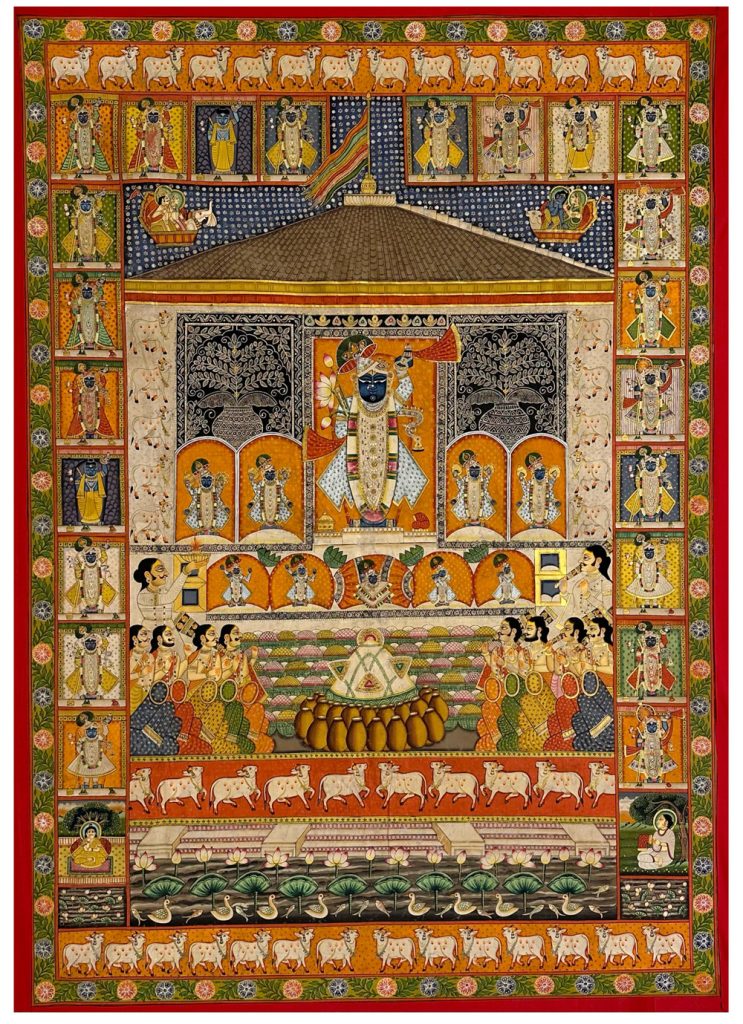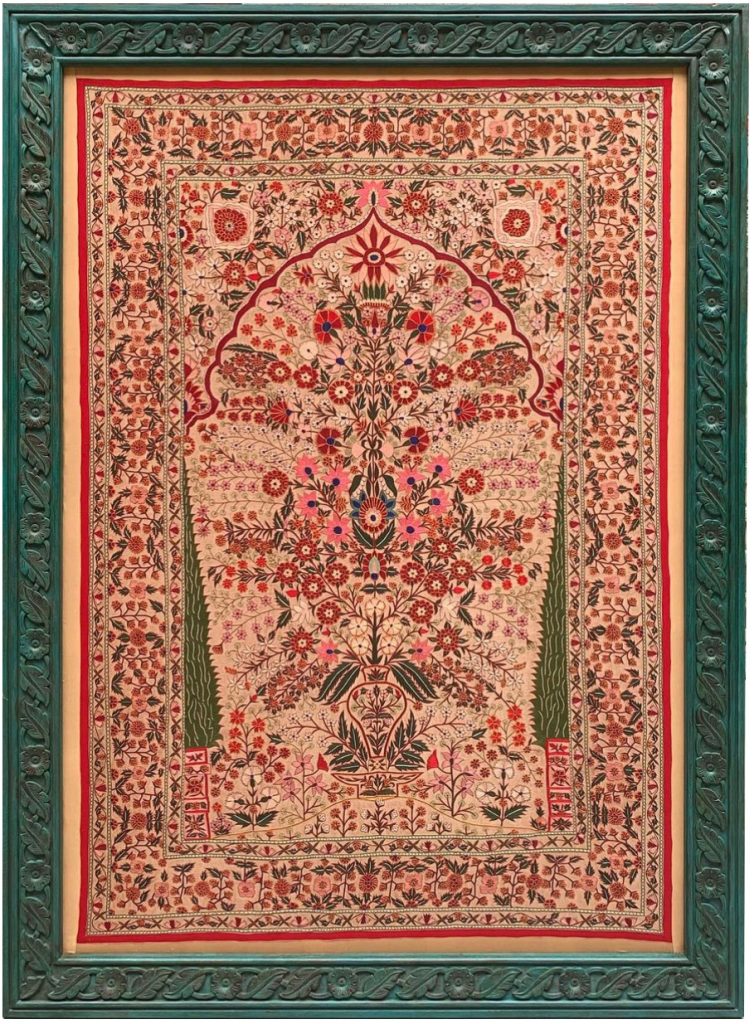
Ganesh Emporium
Tucked away in the lovely serendipitous streets of Udaipur, neighbouring the City Palace, is an enchanting address that’s home to a timeless collection of erstwhile textiles and curios. For those of us with an appetite for authentic vintage finds, we offer treasures from as early as the Mughal Dynasty.
Pichwai
Pichwai (also pichavai, pichhhavai, and pichhwai) is a traditional and exquisite form of art that originates from the culturally rich state of Rajasthan in India.
In Nathdwara, Rajasthan, and other Pushtimarg places, they are Textiles hanging behind the idol of Shrinathji, a seven-year-old infant version of Krishna. They set the tone (bhava) for festivals or events on the Vallabhacharya Sampradaya or sect’s liturgical calendar by serving as both a theatrical backdrop and a religious image.
Vallabhaacharya believed that the way to achieve the ultimate spiritual goal was through devotion (bhakti) to Krishna and the constant remembrance of him in the midst of worldly pursuits. Pichwais are designed to create an appropriate emotional atmosphere for the shringar. In addition to having visual appeal, Pichwais serve the function of telling stories about Krishna to illiterate people.
The pichwais are painted using stone colors and gold leaf and are also made with hand embroidery. They can be made of brocade and thick silk, stitched, painted, and dyed, tinsel printed, block printed, or even constructed of machine-made lace.


Vintage Textiles
India was the world’s foremost centre of textile production until the European Industrial revolution. Here were communities and castes living side by side, at peace – and expressing their differences through colour and textiles. No other land use to enjoy such a profusion of creative energies for the production of textiles as India. The interaction of peoples- invaders , indigenous tribes, traders and explorers – has built a complex culture legendary for its vitality and colours. Today, over ten million weavers, dyers, embroiders and spinners throughout India contribute their handmade textiles to its melting pot.
The colours and style of embellishment of textiles are dictated by climatic and cultural factors and in areas which heretofore had rich and courtly patrons , sophisticated textiles of complex technique and design have evolved over the centuries from original , simple style.
Each caste passes on unchanged from generation to generation its own distinct designs , colours and range of stiches which, together with the cut of garment and their own particular tie and dye and block printed designs, form the major visuals part of caste’s cultural identity. the designs and motifs are inspired by the indigenous flora and fauna and local mythology.
Testimonials

